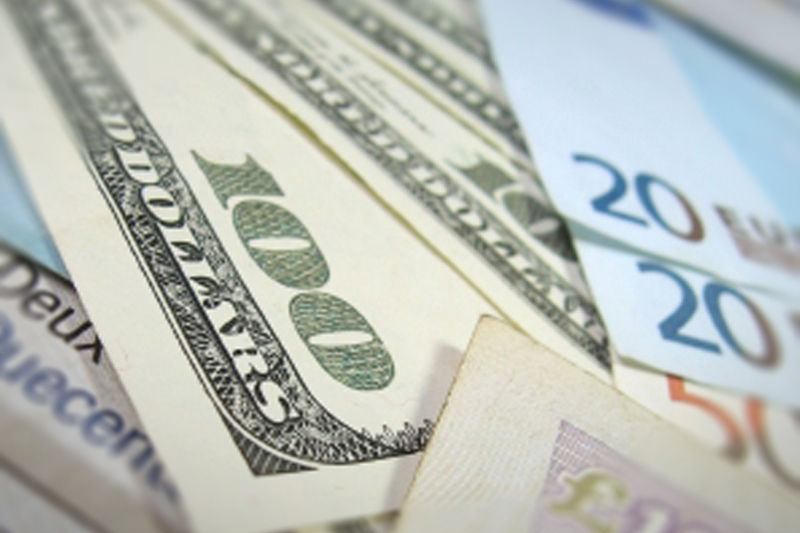Investing.com -- EUR/USD crashed by more than 1.25% to a six-month low on Friday, after a vigorous U.S. jobs report helped strengthened hawkish arguments for an imminent interest rate hike by the Federal Reserve next month.
The currency pair traded in a broad range between 1.0708 and 1.0894 before settling at 1.0739, down 0.0144 or 1.31% on the session. At one point, the euro fell to its lowest level against the dollar since April 22. After peaking above 1.1475 in mid-October, the euro has slumped nearly 6% versus its American counterpart over the last three and a half weeks.
EUR/USD likely gained support at 1.0708, the low from April 21 and was met with resistance at 1.1496, the high from Oct. 15.
On Friday morning, the U.S. Department of Labor said in its October national employment report that nonfarm payrolls surged by 271,000 last month, significantly above expectations for a consensus gain of 190,000. The sharp gains marked the largest increase in U.S. nonfarm jobs since last December. Private payrolls also soared by 268,000 in October, above forecasts of a 174,000 increase.
Large upswings in Professional and Business Services and Trade & Transportation, as well as Retail Trade ahead of the Holiday season, bolstered overall job gains. Within the Professional and Business Services sector, which added 78,000 positions, temporary jobs rose by 25,000. Temporary hiring is a leading indicator for future employment. Restrained by weak export levels, Manufacturing employment remained flat, following two prior months of declines.
One month after wages nationwide ended September unchanged, average hourly earnings jumped 0.4%, considerably above forecasts of a 0.2% gain. Over the last 12 months, hourly wages have spiked by 2.5%, their strongest annual increase in more than six years. The unemployment rate, meanwhile, dipped by 0.1% to 5.0%, in line with consensus estimates.
The U-6 unemployment rate, a broader gauge of the national employment situation, fell by 0.2% to 9.8%, its lowest level since May, 2008. The reading, which measures the total level of unemployed workers plus those marginally attached to the labor force, stood at 11.1% last October. The indicator also accounts for workers who are no longer looking for a job, but have looked for one over the last 12 months.
By comparison, the alternative measure of underemployment peaked at 18% in January, 2010, as the nation continued to recover from the Financial Crisis. The U-6 rate is a preferred measure of unemployment by Fed chair Janet Yellen as she assesses the strength of the U.S. labor market.
On Wednesday in testimony before the House Financial Services Committee, Yellen sent strong hints that the Federal Open Market Committee could raise short-term interest rates at its December meeting if the economy demonstrated continued improvement. The FOMC's benchmark Federal Funds Rate has remained at its current near-zero level since 2009. Following Friday's optimistic employment report, the CME Group (O:CME) increased the probability of a December rate hike to 70%, up from a percentage in the low 60s in response to Yellen's comments on Capitol Hill.
The U.S. Dollar Index, which measures the strength of the greenback versus a basket of six other major currencies, shot up more than 1.25% to an intraday high of 99.47, before closing slightly lower at 99.29. The index soared to its highest level since mid-April.
The Fed's first rate hike in nearly a decade is viewed as bullish for the dollar, as investors abroad pile into the greenback to capitalize on higher yields. Next month, the European Central Bank is also expected to increase the scope of its EUR 1.1 trillion asset-purchasing plan and possibly lower rates following comments from ECB president Mario Draghi earlier this week.
